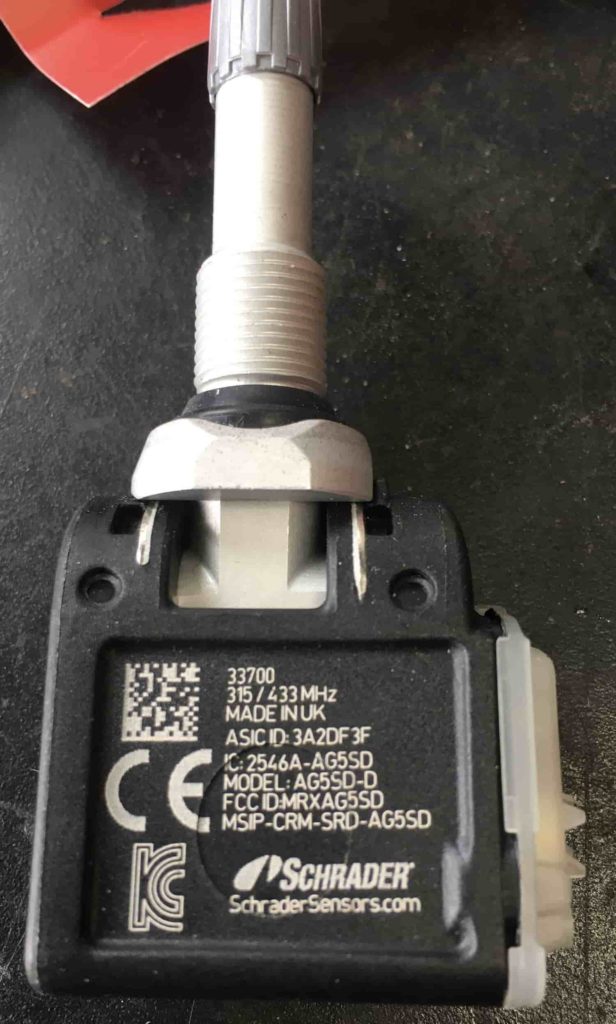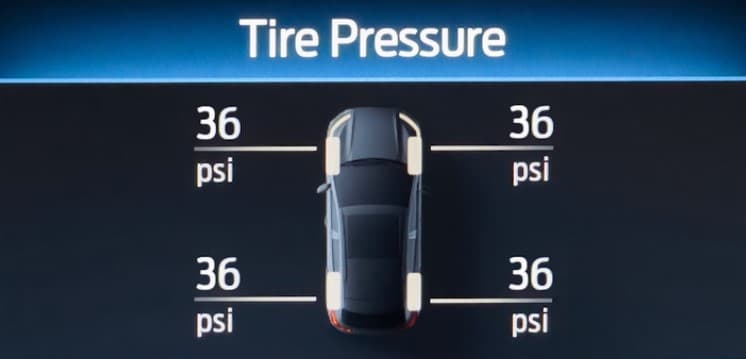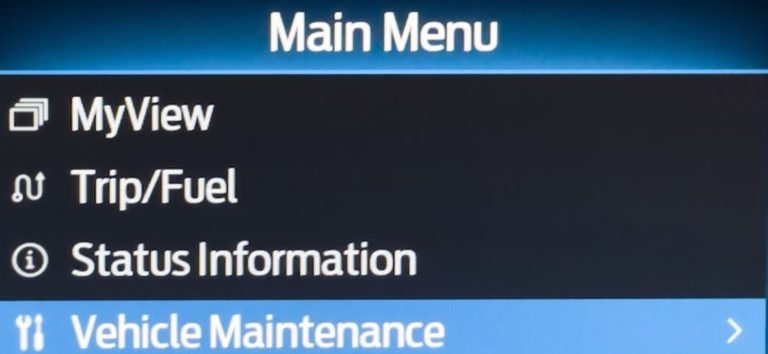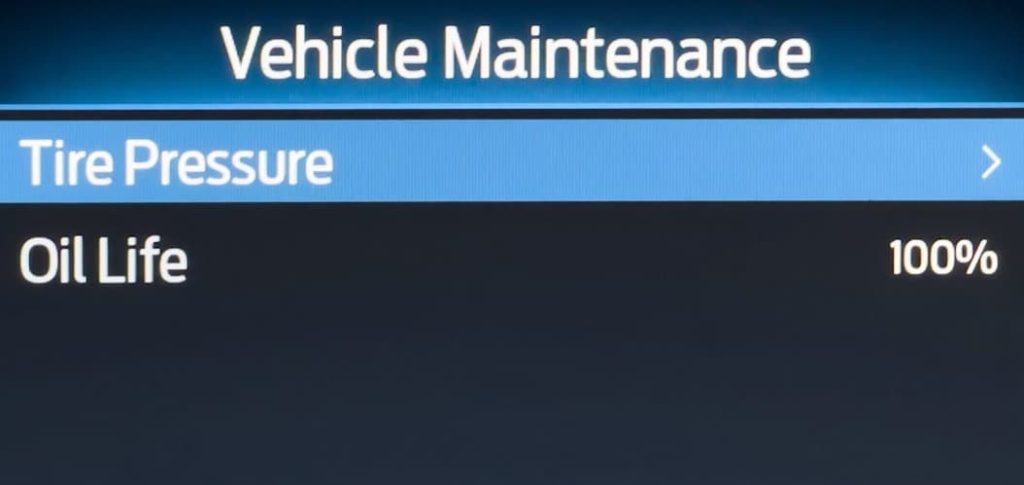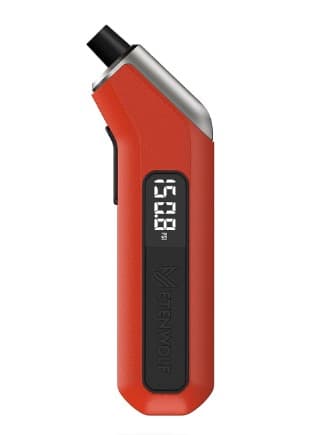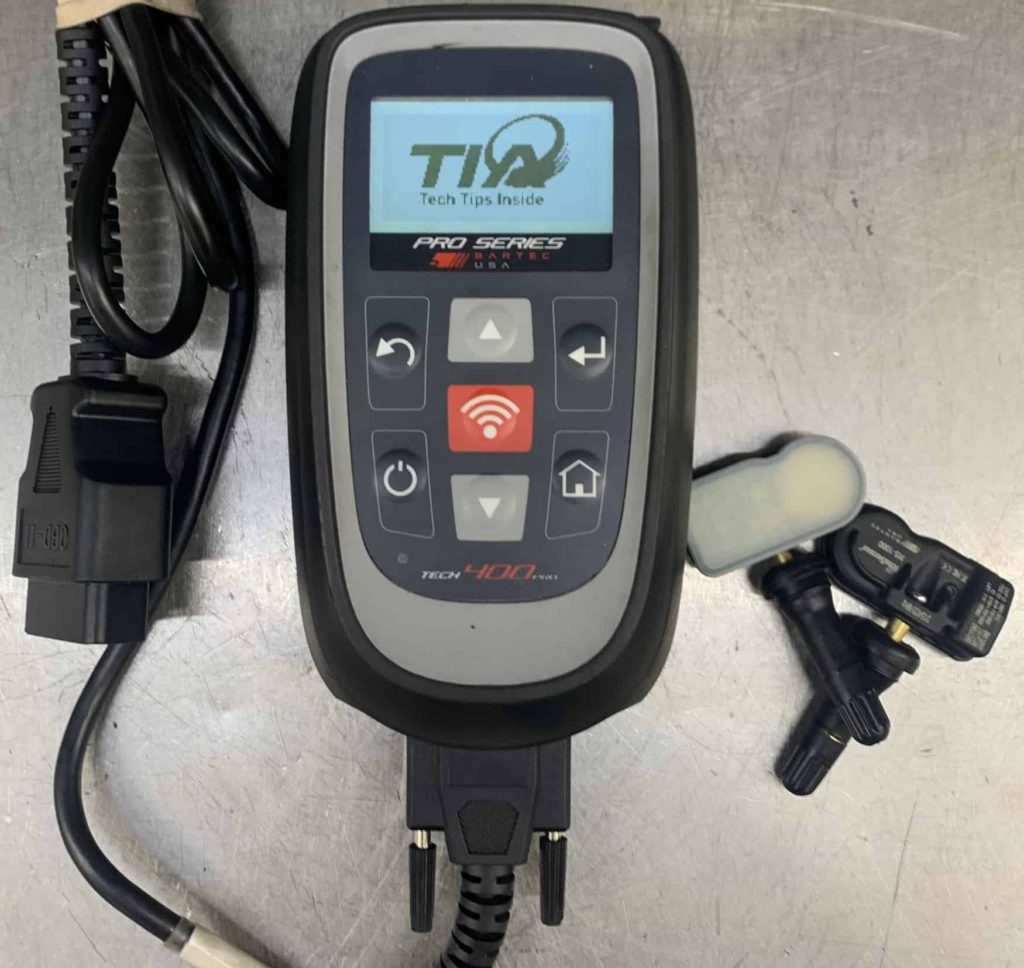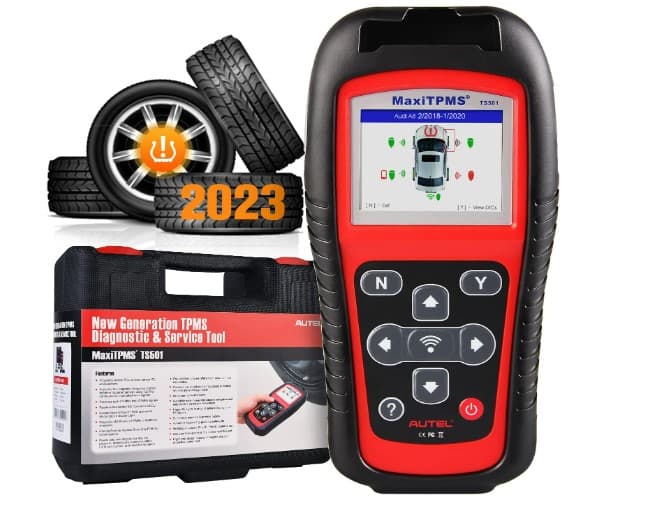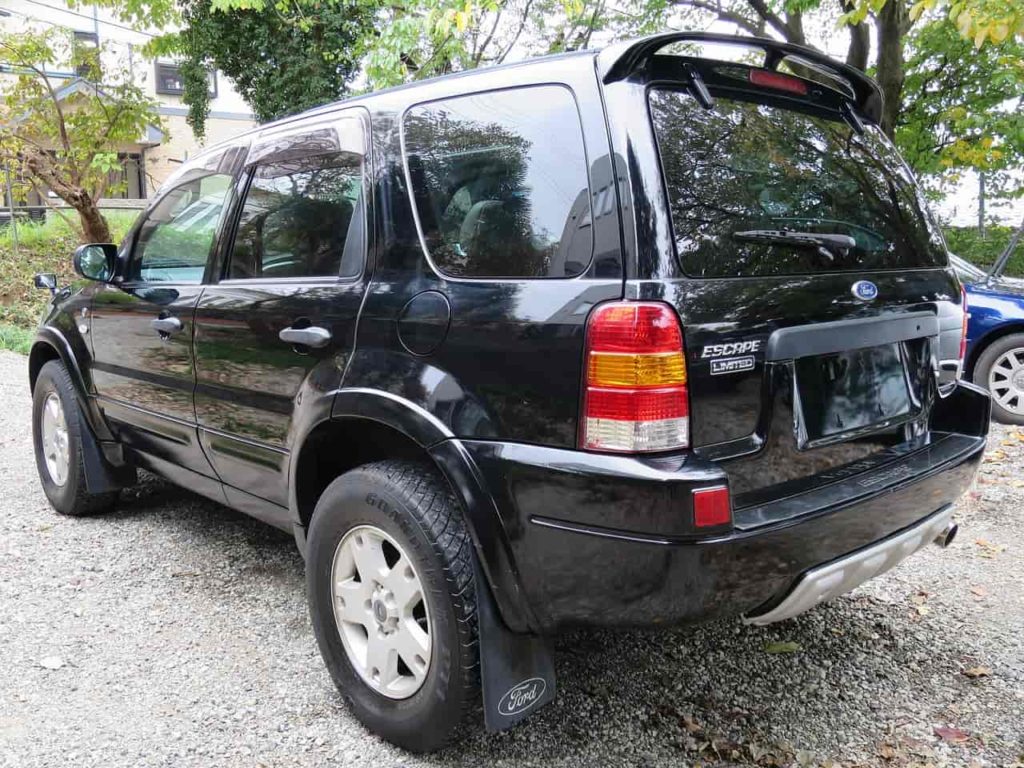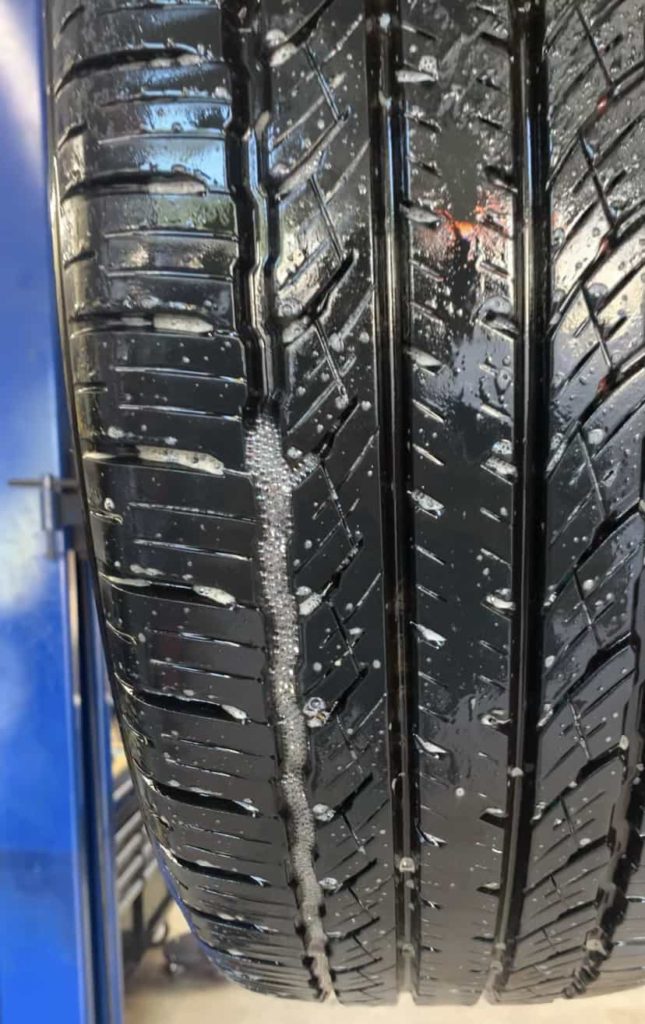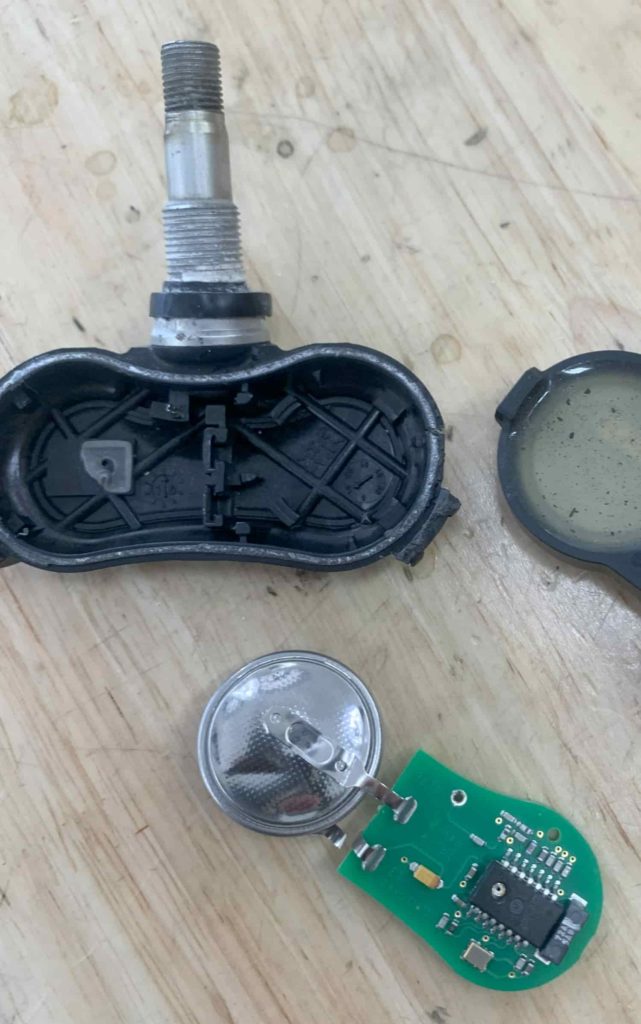How Does the Ford Escape Tire Pressure System Work?
The Ford Escape uses sensors in each wheel, a tire pressure receiver module, and an ECU to measure the tire pressure as well as alert you to when the tire pressure is below the recommended values. Here is how it works:
Tire Pressure Sensors: Small sensors inside each of the Ford Escape’s tires act as individual monitors of the tires they are in. They constantly measure the air pressure and temperature within the tire.
Data Transmission: These sensors use radio-frequency signals to communicate their readings in real-time, broadcasting and communicating this information to a dedicated module within the Escape.
TPMS Receiver Module: Acting as a data sorting hub, this module receives the data from all four tire pressure sensors and processes the information.
Electronic Control Unit (ECU): The processed data from the TPMS receiver module is then forwarded to the car’s ECU, which is essentially the brain of the Ford Escape.
Warning Light: If the ECU detects that the pressure in any of the tires falls below a predetermined level (15-20% below the recommended pressure set by Ford), it triggers a dashboard warning light. The warning light is a yellow exclamation mark inside a tire cross-section.
How to Reset the Ford Escape Tire Pressure Light (2017-2024)
Adjust the tire pressure to the exact cold recommended pressures
Drive the Ford Escape for at least 2 minutes at speeds over 20 Mph.
As long as there aren’t any issues, the tire light will turn off.
How to Train Ford Escape Tire Pressure Sensors (2017-2024)
Training the tire pressure sensors is essentially letting the Ford Escapes ECU know the location of each wheel and tire. Following this procedure after tire rotations, anytime a wheel or tire is replaced, or if a pressure sensor is replaced is mandatory.
Before training the sensors, drive the Ford Escape for a few minutes at speeds over 20 Mph.
Turn the engine off and put the ignition in the Off position. (All power off)
Turn the key to the ON position or press the push start twice without your foot on brake. (Engine Off, All electricity On)
Press the hazard lights button on and off 3 times within 10 seconds.
If you successfully put the Escape in “Reset/Train Mode”, you will hear the horn beep one time.
The tire pressure light will start flashing and a warning will pop up explaining which tire needs training. (We suggest training all the tires)
If this does not work, repeat the process again.
Get out of the Escape and remove the valve cap from the front left tire (driver side front). Gently press the valve stem core in and start releasing air from the tire.
When you hear the horn beep, stop.
A single horn beep confirms that the sensor ID number has been learned by the TPMS receiver module for that wheel position. (front left is now set to front left)
Move onto the front right tire (passenger side front). Release air until the horn beeps.
Move onto the rear right tire (passenger side rear). Release air until the horn beeps.
Move onto the rear left tire (driver side rear). Release air until the horn beeps.
After the rear left tire beeps, check and fill all 4 tires’ pressure back to the recommended cold pressure values. Be exact.
The display screen inside the Escape will now say “training complete”
Select OK
Training Sensor Tips:
Perform this procedure at least 3 feet away from other Ford vehicles, radio equipment and antenna.
Do not wait more than 2 minutes between training each tire pressure sensor.
Always perform this process in the following order: front left wheel, front right wheel, rear right wheel, rear left wheel.
If you hear a double horn beep you need to repeat the entire procedure.
Don’t forget to put the valve stem caps back on!
How to Change Ford Escape Tire Pressure Units (4.2 Inch Display Screen)
You can change the tire pressure units using the instrument cluster information display.
Select the Settings button.
Select the menu button.
Select Display.
Select Tire Pressure.
Choose a tire pressure unit.
How to Change Ford Escape Tire Pressure Units (6.5 Inch Display Screen)
You can change the tire pressure unit using the touchscreen.
Select General settings.
Select Tire Pressure Units.
Choose the desired pressure unit.
What Can Cause the Ford Escape Low Tire Pressure Light to Turn On?
Tire Pressure Sensors: Issues such as faulty sensors or depleted batteries can lead to incorrect pressure readings and TPMS malfunctions on the Ford Escape.
Causes for Loss of Tire Pressure: Factors like shifts in temperature, damaged or leaking valve stems, bead seal issues, punctured tires, cracked or broken wheels or rims, altitude changes, natural air loss, tire dry-rot, and aging tires can all contribute to reduced tire pressure.
Damaging TPMS Sensors During Tire Replacement: Carelessness while replacing or installing tires onto wheels can result in broken tire pressure sensors.
Improper Tire Inflation: Over-inflation or under-inflation of tires will both activate the tire pressure warning light.
Radio Frequency Interference: Nearby electronic devices or vehicles operating on frequencies similar to the Ford Escape TPMS sensors (433 Mhz or 315 Mhz) may disrupt the pressure system. Manually measure the tire pressure if your TPMS is being disrupted.
Wiring Issues in TPMS Module: The TPMS receiver is connected to the ECU via plugs, connectors, and wires. Defective wiring or connectors linked to the TPMS receiver can cause the tire pressure system to malfunction.
Absence of Pressure Sensors in Tires: Using tires that lack pressure sensors, such as spare or seasonal tires, will cause a TPMS error. If using an alternate wheel set, either transfer existing sensors or purchase a new set and program them to the TPMS.
Tire Pressure
Air Temperatures Affect on Tire Pressure
In the Ford Escape, weather conditions can have a noticeable impact on tire pressure. As temperatures drop the air inside the tires contracts and causes a reduction in pressure that may trigger the low pressure warning light. The opposite happens during warm or hot temperatures and will cause the air to expand, increasing the tire pressure. The tires will also heat up after driving. Seasonal transitions are particularly critical times to monitor tire pressure closely. For every 10 to 12 degree change in temperature (farenheit) the tire pressure will change by 1 to 2 Psi.
How to Check the Ford Escape Tire Pressure
Select Menu on the steering wheel
Use the up and down arrows on the steering wheel and scroll down to Vehicle Maintenance
Select Tire Pressure
The current tire pressures will display on screen
How to Manually Check Tire Pressure
Locate Tire Pressure Specifications: Find the yellow and white sticker inside the driver’s side door for the Ford Escapes recommended tire pressures.
Gather Equipment: We suggest using a digital tire pressure gauge and having access to an air compressor/inflator.
Temperature Considerations: To get the most accurate reading and prevent overinflation, check the tire pressure when the tires are cold. This means the Ford Escape hasn’t been driven for at least three hours.
Remove Valve Cap: Unscrew the cap from the valve stem on the first tire you’re checking.
Use Pressure Gauge: Gently press the tire pressure gauge onto the valve stem and check the reading.
Adjust Pressure: If the pressure is too low, use the tire inflator to inflate the tire to the recommended level. If it’s too high, release some air by softly pressing in the center of the valve stem.
Re-check: After inflating or deflating the tire, use the gauge again to ensure the tire is at the recommended pressure.
Replace Valve Cap: Screw the valve cap back onto the stem.
Repeat: Follow the same process for the rest of the tires.
2023 Ford Escape Tire Pressures
TIRE SIZE | FRONT PSI | REAR PSI |
225/60R18 | 33 | 33 |
225/55R17 | 33 | 33 |
225/55R19 | 36 | 36 |
SPARE | 60 | 60 |
Why is Driving With the Correct Tire Pressure Important?
Safety: Proper tire pressure enhances the Ford Escape’s stability and handling which reduces the risk of accidents.
Fuel Efficiency: Correctly inflated tires help achieve promised fuel economy range.
Tire Longevity: Maintaining the right pressure extends the lifespan of your tires and minimizes outer or inner tire tread wear.
Performance: Accurate tire pressure prevents poor traction and braking.
Environmental Impact: Proper tire inflation reduces rolling resistance and prematurely wearing out tires which in turn lowers CO2 emissions and tire waste.
Diagnosing the Ford Escape TPMS
If your tire pressure warning light comes on in your Ford Escape it means something is not right. If you’ve tried the reset procedure as well as the sensor re-training, there are a few more options you can try.
Solution 1: Is There a Tire Losing Air Pressure?
The main reason for the low tire pressure warning light to come on is typically air loss from the tire. To be sure this is the issue, try this:
Check the tire pressures in all 4 tires and take note of the one low on air.
Fill it with air to the recommended pressure level.
Drive the Ford Escape for a few minutes over 20 Mph.
If you inflate a low tire and the warning light goes off only to return after some time on the road—be it minutes, hours, or days—this strongly suggests that the tire or wheel has a leak. Now you have found which tire is leaking. Follow solution 6 to find out where it is leaking from.
Solution 2: Manually Erase the Diagnostic Trouble Codes (DTC) From the Ford ECU
Everytime the Ford Escape tire pressure light turns on, the Ford Escapes computer (ECU) records it and stores this information as diagnostic trouble codes. To clear these codes you can attempt to do a hard reset on the car’s ECU which will erase any temporary DTC’s, including the low tire pressure DTC’s. First, make sure the car is off and any lights or electrical are off. Pop the hood and disconnect the negative battery terminal to the main 12 Volt battery. Wait a few moments and then reconnect the negative terminal. The vehicle will go into a “relearning” phase and need to be driven. We suggest driving the Escape for 30 minutes at a constant speed of 50 Mph. Note: If the low tire light turns off after reconnecting the battery and then turns back on as you drive, this means that one or more tire pressure sensors are faulty and need replacing or you just have a leaking tire.
Solution 3: Find the Faulty Tire Pressure Sensor
If you believe one or more tire pressure sensors are low on battery or faulty in some way, you can check the status of each sensor individually using a TPMS diagnostic tool. I have used many different makes and models of these tools and the process is the same regardless. Sync the tool with the Ford Escape (using the OBD2 port) and place the tool directly in front of the tire valve of the front left wheel. Select the “test” or “trigger” function on the tool and wait for the tool to reply. Do this for the following 3 sensors and check the tool’s report. If any sensor reports a “low” battery, can’t register, or fails to connect with the TPMS tool, this implies that that specific sensor needs replacing.
Solution 4: Reactivate a Sleeping TPMS Sensor
After following the Ford Escape sensor training steps and one or more sensors are not working, you can attempt to “awaken” a sleeping or non-active sensor. To do so, release about 15 Psi from the problem tire by gently pressing the valve stem core in. Wait a few seconds and then inflate the tire with an extra 5 Psi above the recommended tire pressure. This means if the tire pressure should be at 35 Psi, fill it to 40 Psi. Next, with the tire overinflated, drive the Ford Escape for a few minutes at speeds over 20 Mph. After, park and readjust the pressure back to the recommended value and drive the SUV again for a few minutes at speeds over 20 Mph.
Solution 5: The Tire Light Turns On and Off On Its Own
When you first get in the car everyday the tires are cold. This means the pressure could have potentially dropped a few pounds of air which will cause the tire light to turn on. Then, as you start driving and the tire heats up, the pressure goes up and the tire light turns off. The solution to this issue is to check and adjust your Ford Escape’s tire pressure when the tires are cold. Adjusting tire pressure when the tires are cold is the only way to get an accurate reading and prevent the tire light from turning on and off.
Solution 6: Find the Tire Leak
If you have figured out which tire is leaking air there is a simple procedure anyone can follow to figure out where the tire leak is coming from. You will need 4 things: a spray bottle, water, soap, and a tire inflator. First, inflate the tire low on air with at least the recommended pressure. Next, mix water and soap into the spray bottle. Make sure there is a good amount of soap (you can also use windex or something similar). Next, spray down the tire with the soapy mixture. Be sure to spray and soak the entire tire as well as the valve stem. After the tire is soaked, examine it for tiny bubbles. The bubbles represent where the tire is leaking from. If you see air bubbles you have found the leak.
Ford Escape TPMS Sensor Batteries
Each tire pressure sensor in each wheel of the Ford Escape is powered by its own battery. The batteries are silver-oxide and look just like wrist watch batteries. Each sensor’s circuit board is soldered directly to the battery within a plastic housing. This means when there is a low battery the battery cannot be replaced and the entire sensor has to be removed and replaced. Each sensor typically lasts between 5 and 10 years or about 100,000 miles.
Ford Escape TPMS Questions
What is a Ford Escape TPMS Malfunction?
A tire pressure monitoring system malfunction occurs when one or more sensors are no longer or cannot communicate with the Ford’s TPMS receiver module. The information display will show a message “Tire Pressure Monitor Fault” or “Tire Pressure Sensor Fault” as well as the tire pressure light will flash for about a minute and then stay on. This will either happen when a tire pressure sensor is low or dead on battery power, is no longer working, or if you are driving the Escape with one or more wheels missing sensors. For instance, the Ford escape spare tire does not have a tire pressure sensor in it. This means when you drive with the spare on, the Escape TPMS receiver is only receiving sensor information from 3 tires instead of 4. This will cause a “Tire Pressure Sensor Fault”.
Is it Safe to Drive the Ford Escape With the Tire Light On?
It is generally not safe to drive the Ford Escape with the tire light on. When the tire light turns on, stop as soon as possible and check each tire’s pressure. Determining why the tire light is on is essential in figuring out if it is safe to drive with the tire light on.
Is it Safe to Use Tire Plugs?
I have been using tire plugs for many years and believe they are a reliable way to fix a punctured tire. If a tire plug is installed correctly it will last for the remaining life of the tire.
Is it Safe to Use Tire Sealants?
Tire sealants should only be used in emergency situations. Tire sealants are essentially a liquid so injecting it into a tire can cause a tire imbalance as well as damage the electronics of a tire pressure sensor. Using a tire sealant can actually cause the tire light to turn on.
Everything in this article is applicable to all Ford Escape models and versions including the Ford Escape Active, ST-Line, ST-Line Select, Platinum, ST-Line Elite, and Escape Plug-in Hybrid.
Please note that this blog post contains Amazon affiliate links. This means that if you make a purchase through one of these links, we at TPMSRESET.COM may earn a small commission at no extra cost to you. We only recommend products that we personally use and believe in. Thank you for supporting us.


